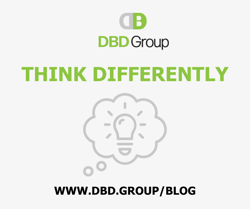Many nonprofits wonder how to identify people who have DAFs and how to get their cause in front of them. It can be a little complicated but with some investigation into how the DAF is administered, you can find the person behind the DAF and start to share your mission and impact with them. Let’s explore...
What are DAFs?
DAFs (donor-advised funds) are philanthropic vehicles established by individuals, families, or organizations to facilitate charitable giving. Grantmaking through DAFs has increased every year since 2009 and has more than doubled in the past five years. The following table illustrates just how big of an impact DAFs are making on the charitable landscape. While DAFs hold roughly 20% of the assets compared to private foundations, their distributions are much higher by percentage (22.7% vs. 8.6%)*.
How are DAFs Administered?
Donor Advised Funds are administered by sponsoring organizations, which manage the funds, invest assets, and oversee grant distributions. They may require a minimum contribution (approx. $5K-$25K). There are three primary types of sponsoring organizations:
Single-Issue Funds are a specialized type of DAF sponsored by organizations or institutions focused on specific causes or areas of interest such as education, healthcare, environmental conservation, or religious missions. Typically, these are set up by large universities, hospital systems, or national and global movements. Oftentimes donor contributions to single-issue funds are made with the understanding that the funds will be designated for a narrow purpose or to a select set of organizations chosen by the fund’s administrators.
National DAFs are charitable arms of financial custodians like Fidelity, Schwab, UBS, and others. These provide donors with broader charitable giving options and investment opportunities, and many do not require a minimum contribution making them accessible to a broader range of individuals. However due their scope and size, National DAFs generally do not make recommendations to donors on who to support.
Community Foundations are the third type of sponsoring organization and according to the most recent data, make up nearly 23% of total grant dollars from DAFs. In addition to pooling contributions from multiple donors to create a collective fund, many offer donors the opportunity to set up individual DAFs and are much more active in recommending nonprofits to DAF account holders.
Connecting with Community Foundations
Getting a nonprofit cause in front of DAF donors associated with a community foundation requires strategic outreach and relationship-building efforts. Here are some practical steps a nonprofit can take to accomplish this:
- Do Your Homework Understand the mission, focus areas, and grantmaking priorities of the community foundation. Identify any existing partnerships or connections between your nonprofit and the foundation.
- Network and Build Relationships Attend events, workshops, or networking opportunities hosted by the community foundation. Seek introductions to foundation staff, board members, or donors through mutual contacts or outreach. And most importantly, engage in genuine conversations to understand the interests and priorities of DAF donors associated with the foundation.
- Craft a List of Compelling Opportunities Once you know the interests and funding priorities of their DAF donors, develop clear and compelling outlines for all programs or initiatives that align with your organization. Be sure to highlight the impact and outcomes of each and articulate how funding support will make a difference in the community and address pressing needs or challenges.
- Leverage Existing Relationships The staff at community foundations often take a lead role in introducing DAF donors to other donors with similar interests. If your nonprofit has existing donors or supporters who are also DAF donors at the community foundation, engage them in advocating for your cause by taking advantage of this resource.
- Utilize Online Platforms Some community foundations have online portals or directories where nonprofits can showcase their projects and funding needs. Ensure your nonprofit's information is up-to-date and accessible on relevant platforms or databases maintained by the community foundation.
- Offer Opportunities for Engagement Provide opportunities for DAF donors associated with the community foundation to learn more about your nonprofit's work. Invite them to tours, site visits, or events that showcase your organization's impact firsthand. Facilitate opportunities for DAF donors to meet with program staff, beneficiaries, or community partners to deepen their understanding of your work.
- Radical Stewardship Express gratitude for any support received from DAF donors associated with the community foundation, regardless of the size of the contribution. Provide regular updates on the progress of funded projects and the impact achieved. Maintain open communication channels and be responsive to inquiries or requests for additional information.
These strategies will not only help you to better connect with donors who utilize DAFs. Building closer relationships with your community foundation can lead to positive outcomes for your organization for years to come.
If you’d like to learn more about strategies to engage your DAF donors, please reach out to us.
*Source: The 2023 DAF Report published by the National Philanthropic Trust https://www.nptrust.org/reports/daf-report/
THIS MONTH'S FOCUS
Things are changing in the world of nonprofit leadership and nonprofit fundraising. New generations, new technology, new ways of communicating... these trends are challenging all of us to think differently. This month, join us as we explore the opportunities we have to try new things, explore new ways of engaging, and meet the challenges of the future.

